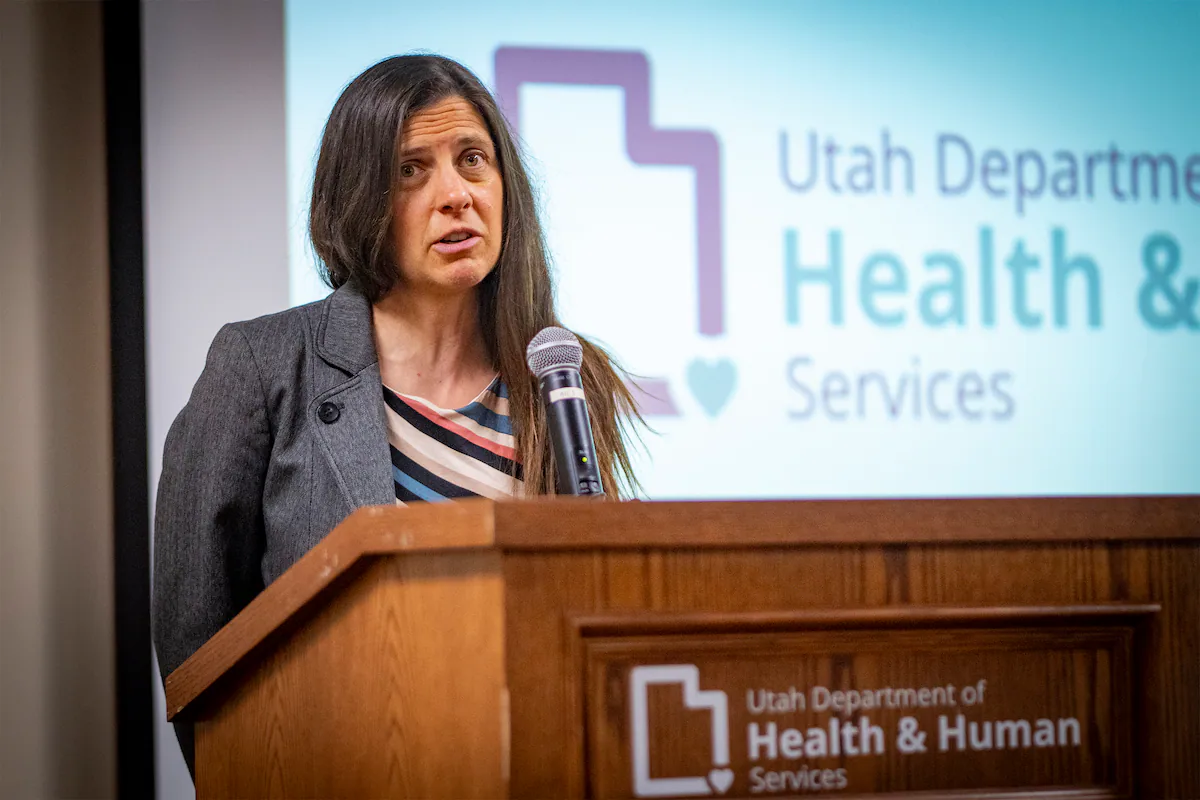
Bear River Health Department officials faced a race against time Friday, when they learned 11 infants within their district had been exposed to measles days before.
They needed to notify the babies’ families and offer post-exposure treatment quickly enough that the medicine would still be effective.
The exposure, they had learned, happened when the infants had visited the same clinic as an infected person.
Bear River health director Jordan Mathis — whose district covers Box Elder, Cache and Rich Counties — said what happened next was a collaboration between his department, the Utah Department of Health and Human Services and Intermountain Health as all three agencies worked to reduce the babies’ chances of becoming infected.
How health officials responded
The 11 infants were exposed at Intermountain Health’s Budge Clinic in Logan on Sept. 15, Mathis explained. They were particularly vulnerable because their age meant they had a heightened risk of severe symptoms: pneumonia, brain infection, seizures or even death.
Because they were all under the age of 1, none had been eligible to receive the measles-mumps-rubella (MMR) vaccine, he said.
The state keeps a stock of post-exposure prophylactic globulin — a treatment that prevents infection after measles exposure — in case a group of people ineligible to receive the vaccine, like the infants, is exposed, Mathis said.
However, he added, the treatment must be administered within six days to be effective.
“We had until Sunday to get all those individuals and get them the treatment,” he said. “We definitely had to figure things out on the fly.”
He said the babies’ families were all notified of the exposure by 10 p.m. Friday.
Working with Intermountain Health and the state’s health department, Bear River health officials were able to offer a clinic Saturday, where nine of the infants’ families accepted the medicine, he said.
The other two babies were referred to an emergency room, he said, to receive the treatment through an IV because of their size.
“I view it as a great flow of communication, collaboration in order to help hopefully reduce the spread of the disease in our community,” Mathis said.
As of Tuesday, Bear River spokesperson Estee Hunt said none of the babies was exhibiting any measles symptoms. If infected, symptoms typically develop within seven to 14 days, according to Utah health officials.
Post-exposure treatment is limited
Utah has now seen 41 officially confirmed measles cases this year, four of which were found in the Bear River district.
Though the infants received post-exposure treatment, Mathis emphasized the MMR vaccine as a safe, preventative measure for those who are eligible. Pregnant people, for instance, are not.
According to Utah health officials, the vaccine is 97% effective for those who receive two doses.
The state recommends children receive their first dose on or after their first birthday, and a second when they are 4 to 6 years old.
The 11 babies who received post-exposure treatment will be on a delayed schedule for the MMR vaccine, Mathis said.
Utah epidemiologist Dr. Leisha Nolen noted that while the state has a limited supply of post-exposure treatment that can be used on young infants, it may not have enough in the event of a mass exposure.



